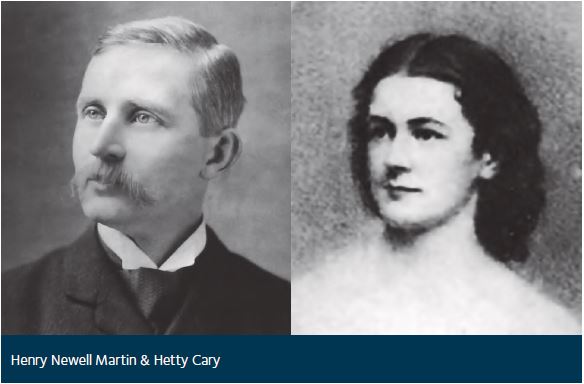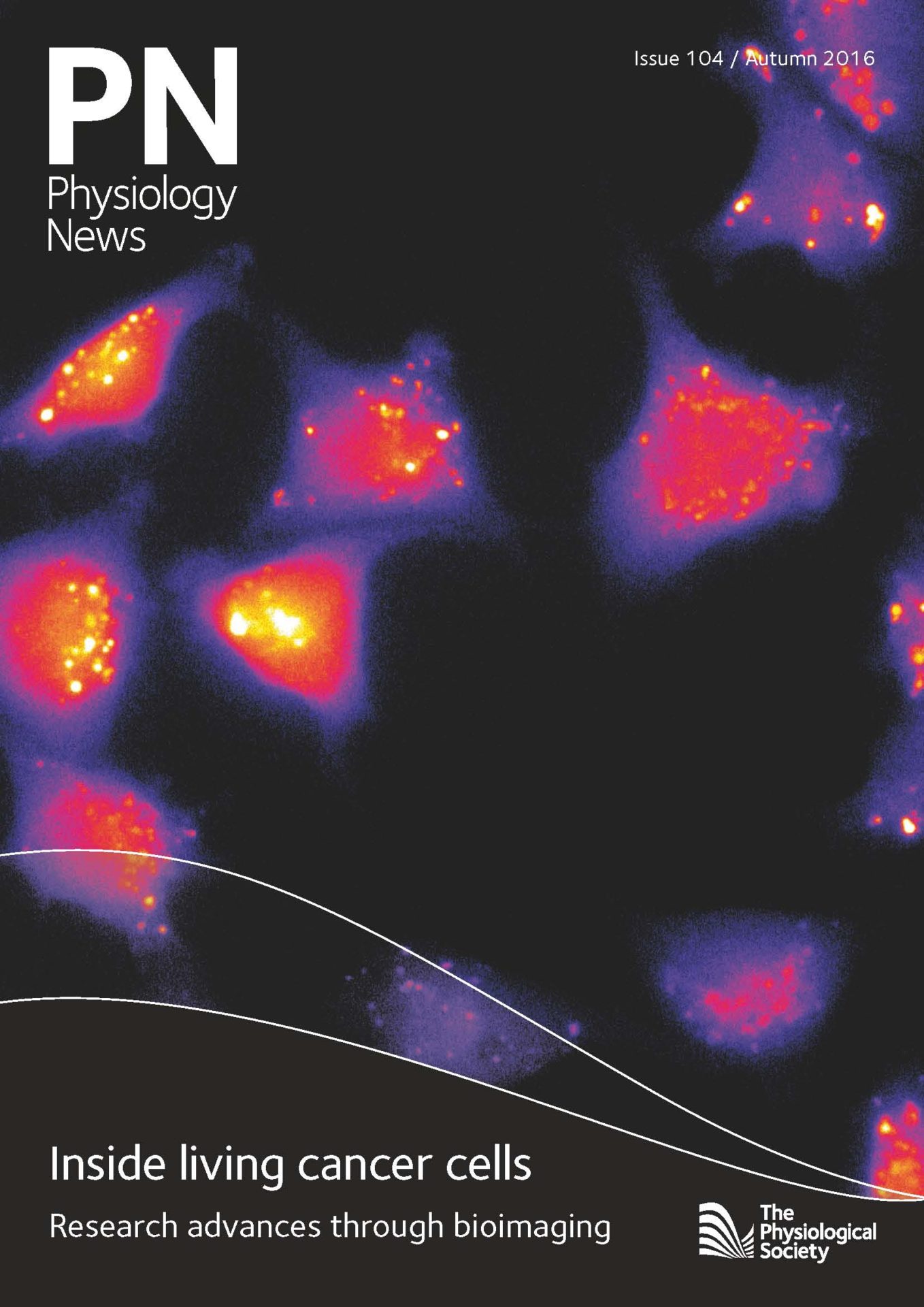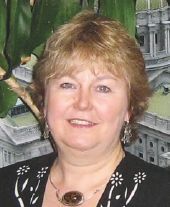
Physiology News Magazine
Our common ancestor: Henry Newell Martin (1848–1896)
Membership
Our common ancestor: Henry Newell Martin (1848–1896)
Membership
Tilli Tansey
Professor of the History of Modern Medical Sciences, QMUL
https://doi.org/10.36866/pn.104.36
|
|
Professor of the History of Modern Medical Sciences, QMUL |
One of the Founder Members of The Physiological Society in March 1876 was Henry Newell Martin, a protégé of both Michael Foster and Thomas Henry Huxley. That same year he was appointed the first Professor of Biology at the Johns Hopkins University at Baltimore, from where he actively promoted experimental biology and physiology, he and his laboratory exerting ‘a unique influence on the development of physiology in America’ (Appel 1987). He was enormously influential in ensuring the survival of the embryonic Journal of Physiology and guaranteeing American editorial involvement. And with Henry P Bowditch and S Weir Mitchell, he initiated the foundation of the American Physiological Society (APS), which held its preliminary meeting on December 30, 1887, in New York. Martin was largely responsible for writing the first draft of the APS Constitution,
and served as first secretary-treasurer of APS from the inaugural meeting until 1892.
Martin, Foster and Huxley

Born in Newry, County Down in 1848, he matriculated at the University of London aged 16, where he came to the attention of Michael Foster, then working as William Sharpey’s assistant at University College. He moved to Christ’s College, Cambridge, in October 1870, just as Foster also moved there to become the first Praelector of Physiology at Trinity College, and in 1873 gained first place in the Natural Science Tripos at Cambridge. He assisted both Foster in Cambridge, and Huxley at the Royal College of Science, in teaching laboratory classes and in writing introductory texts (e.g. Huxley and Martin 1875). It is therefore of little surprise that when the Trustees of the new Johns Hopkins University, anxious to appoint a Professor to develop physiology research and teaching, consulted Foster and Huxley as to a suitable candidate, Martin was recommended (Sharpey-Schafer, 1927).
Martin, Johns Hopkins and The Journal of Physiology
Martin’s immediate task in the infant Johns Hopkins University was to develop biological sciences, in preparation for the eventual creation there of a Medical School; this was the first clearly identified biological research programme in the United States (Maienschein 1987). Martin threw himself into recruiting demonstrators, students and organising classes and laboratories, often at personal expense, as Henry Sewall, later Professor of Physiology in Denver, Colorado, recalled ‘… my spirits were lightened when I saw a young man, he was then twenty-eight and looked younger, who treated me at once something like a companion… Martin accepted me as his assistant in the biological laboratory at a stipend of $250 for the first six months. Not for many months did I suspect that this was at first a private and not a University appointment’ (Sewall 1911).

These early physiologists faced the very real problem of where to publish. In 1878, frustrated by the lack of a dedicated English-language physiological journal as opposed to general medical or anatomical journals, Michael Foster started The Journal of Physiology (‘The Journal’) as a private venture although clearly recognising that ‘[T]he number of professional physiologists is small in both America and England; too small to support a journal taken in by physiologists only’ (Foster to Warren, mid-1878, Physiological Society Archives SA/PHY F1/3/2). He calculated that 400, preferably 500, subscribers would be necessary to support The Journal, which seems extraordinarily optimistic at a time when the total membership of the Physiological Society was approximately forty. Foster recruited colleagues around the world, writing to Henry Bowditch in Harvard, ‘I mean to worry everyone who ought to subscribe until they do – & hope you will do the same in the States’ (Foster to Bowditch, 5.4.1878, Physiological Society Archives SA/PHY F1/3/1/9).
Financially however, the survival of The Journal looked shaky. In Britain, the support of the founder of the Cambridge Scientific Instrument Co., A G Dew-Smith, became essential, and in the USA during the early months of 1880, a number of American physiologists considered ways in which they could help. Martin immediately negotiated with the Johns Hopkins Trustees to provide a subsidy of $250, on condition that Foster include an agreed acknowledgment, ‘published in America with the aid of the Johns Hopkin University’, on the title page of The Journal. By the end of that year, British publication was taken over by the Cambridge Scientific Instrument Co., and Johns Hopkins University acted as The Journal’s American publishers and distributors, although Martin uncovered the disturbing fact that there were at that time only 12 American subscribers to The Journal (Martin to Bowditch, late 1880, Physiological Society Archives, SA/PHY/ F1/3/3). By the end of the century, however, it was felt that the market for physiological papers was such as to warrant a second journal in the field, and William Porter of Harvard established the American Journal of Physiology in 1898 (Geison 1987).
Martin, career and personal life
But Martin didn’t live to see this new journal. His health began to fail soon after his arrival in Baltimore, according to some sources as a consequence of alcoholism. In 1879, he married Hetty Cary, the widow of Confederate General John Pegram. Somewhat older and more socially prominent than her husband, Hetty gave him greater access to Baltimore society, which aided his advocacy for Johns Hopkins. She died in 1892 and just a few months later he resigned from his chair, shortly before the opening of the Medical School in 1893, and he returned to England, dying at the early age of 48 in Burley-in-Wharfedale in Yorkshire. In addition to all his efforts to develop, promote and nurture physiology, he had maintained his own researches. In 1881, for example, he developed the first isolated mammalian heart lung preparation, which Ernest Starling later used to great effect (Breathnach 1969), and in a eulogy in Colorado, Michael Foster is quoted as having said ‘So if I have done nothing more, at all events I sent Henry Newell Martin to America’ (Sewall 1911).
References
Appel T (1987). ‘Founding’ in History of the American Physiological Society: the first century, 1887-1987. American Physiological Society, Bethesda MA, pp.11-29
Breathnach CS (1969). Henry Newell Martin (1848-1893). A pioneer physiologist. Med Hist 13, 271-279
Foster M (1900). Colorado Med. J., cited by Sewall.
Fye WB (1986). H. Newell Martin and the isolated heart preparation: The link between the frog and open heart surgery. Circulation 73, 857-864
Geison G (1987) ‘International relations and domestic elites in American physiology, 1900-1940 ‘ in Geison GL (ed) Physiology in the American context, 1850-1940 American Physiological Society, Bethesda, MA, pp 115-154
Huxley TH, assisted by Martin HN (1875). A course of practical instruction in elementary biology. Macmillan, London.
Maienschein J (1987). Physiology, biology, and the advent of physiological morphology. In: Geison GL (ed). Physiology in the American Context 1850-1940. American Physiological Society, Bethesda, Maryland, pp.177-193
Sewall H (1911). Henry Newell Martin, Professor of Biology in Johns Hopkins University, 1876-1893. Johns Hopkins Hosp Bull 22, 327-33
Sharpey-Schafer E (1927). History of the Physiological Society during its first fifty years, 1876-1926. J Physiol 64 (Suppl. 3), 1-76

